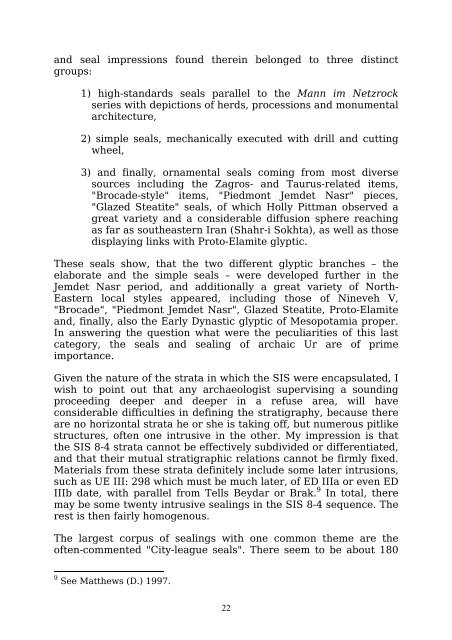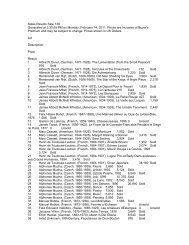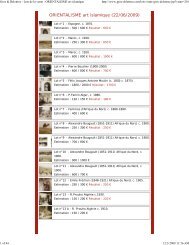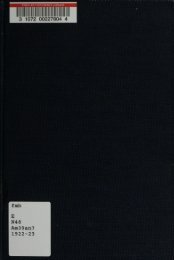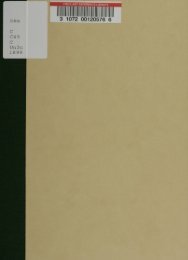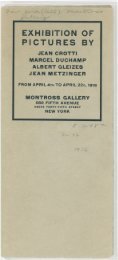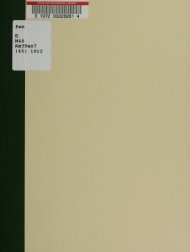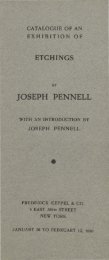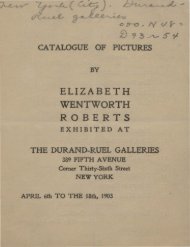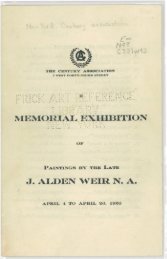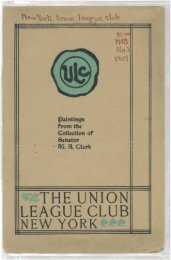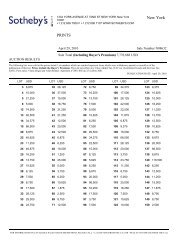Shepherds of the black-headed people - New York Art Resources ...
Shepherds of the black-headed people - New York Art Resources ...
Shepherds of the black-headed people - New York Art Resources ...
- No tags were found...
Create successful ePaper yourself
Turn your PDF publications into a flip-book with our unique Google optimized e-Paper software.
and seal impressions found <strong>the</strong>rein belonged to three distinctgroups:1) high-standards seals parallel to <strong>the</strong> Mann im Netzrockseries with depictions <strong>of</strong> herds, processions and monumentalarchitecture,2) simple seals, mechanically executed with drill and cuttingwheel,3) and finally, ornamental seals coming from most diversesources including <strong>the</strong> Zagros- and Taurus-related items,"Brocade-style" items, "Piedmont Jemdet Nasr" pieces,"Glazed Steatite" seals, <strong>of</strong> which Holly Pittman observed agreat variety and a considerable diffusion sphere reachingas far as sou<strong>the</strong>astern Iran (Shahr-i Sokhta), as well as thosedisplaying links with Proto-Elamite glyptic.These seals show, that <strong>the</strong> two different glyptic branches – <strong>the</strong>elaborate and <strong>the</strong> simple seals – were developed fur<strong>the</strong>r in <strong>the</strong>Jemdet Nasr period, and additionally a great variety <strong>of</strong> North-Eastern local styles appeared, including those <strong>of</strong> Nineveh V,"Brocade", "Piedmont Jemdet Nasr", Glazed Steatite, Proto-Elamiteand, finally, also <strong>the</strong> Early Dynastic glyptic <strong>of</strong> Mesopotamia proper.In answering <strong>the</strong> question what were <strong>the</strong> peculiarities <strong>of</strong> this lastcategory, <strong>the</strong> seals and sealing <strong>of</strong> archaic Ur are <strong>of</strong> primeimportance.Given <strong>the</strong> nature <strong>of</strong> <strong>the</strong> strata in which <strong>the</strong> SIS were encapsulated, Iwish to point out that any archaeologist supervising a soundingproceeding deeper and deeper in a refuse area, will haveconsiderable difficulties in defining <strong>the</strong> stratigraphy, because <strong>the</strong>reare no horizontal strata he or she is taking <strong>of</strong>f, but numerous pitlikestructures, <strong>of</strong>ten one intrusive in <strong>the</strong> o<strong>the</strong>r. My impression is that<strong>the</strong> SIS 8-4 strata cannot be effectively subdivided or differentiated,and that <strong>the</strong>ir mutual stratigraphic relations cannot be firmly fixed.Materials from <strong>the</strong>se strata definitely include some later intrusions,such as UE III: 298 which must be much later, <strong>of</strong> ED IIIa or even EDIIIb date, with parallel from Tells Beydar or Brak. 9 In total, <strong>the</strong>remay be some twenty intrusive sealings in <strong>the</strong> SIS 8-4 sequence. Therest is <strong>the</strong>n fairly homogenous.The largest corpus <strong>of</strong> sealings with one common <strong>the</strong>me are <strong>the</strong><strong>of</strong>ten-commented "City-league seals". There seem to be about 1809 See Mat<strong>the</strong>ws (D.) 1997.22


